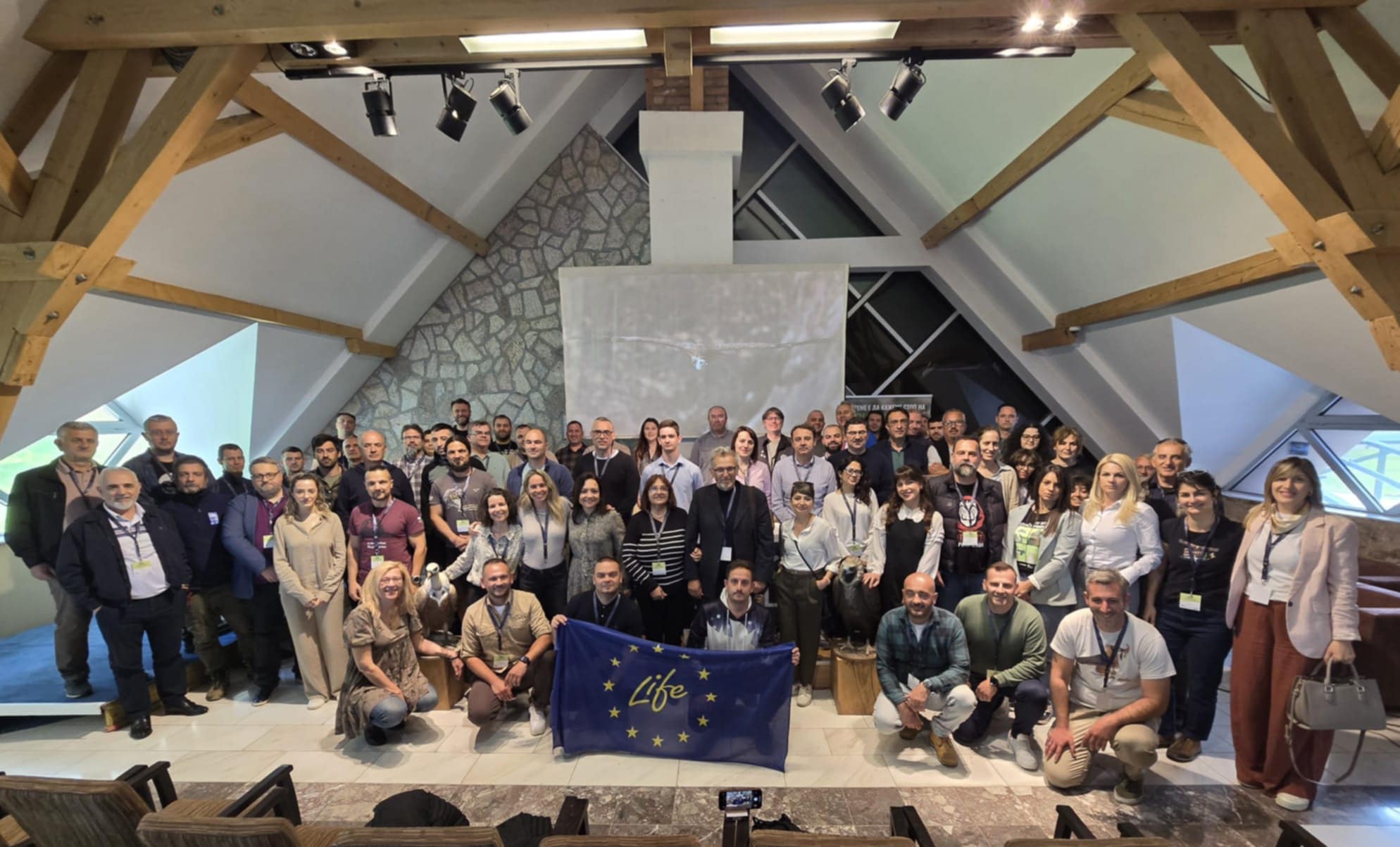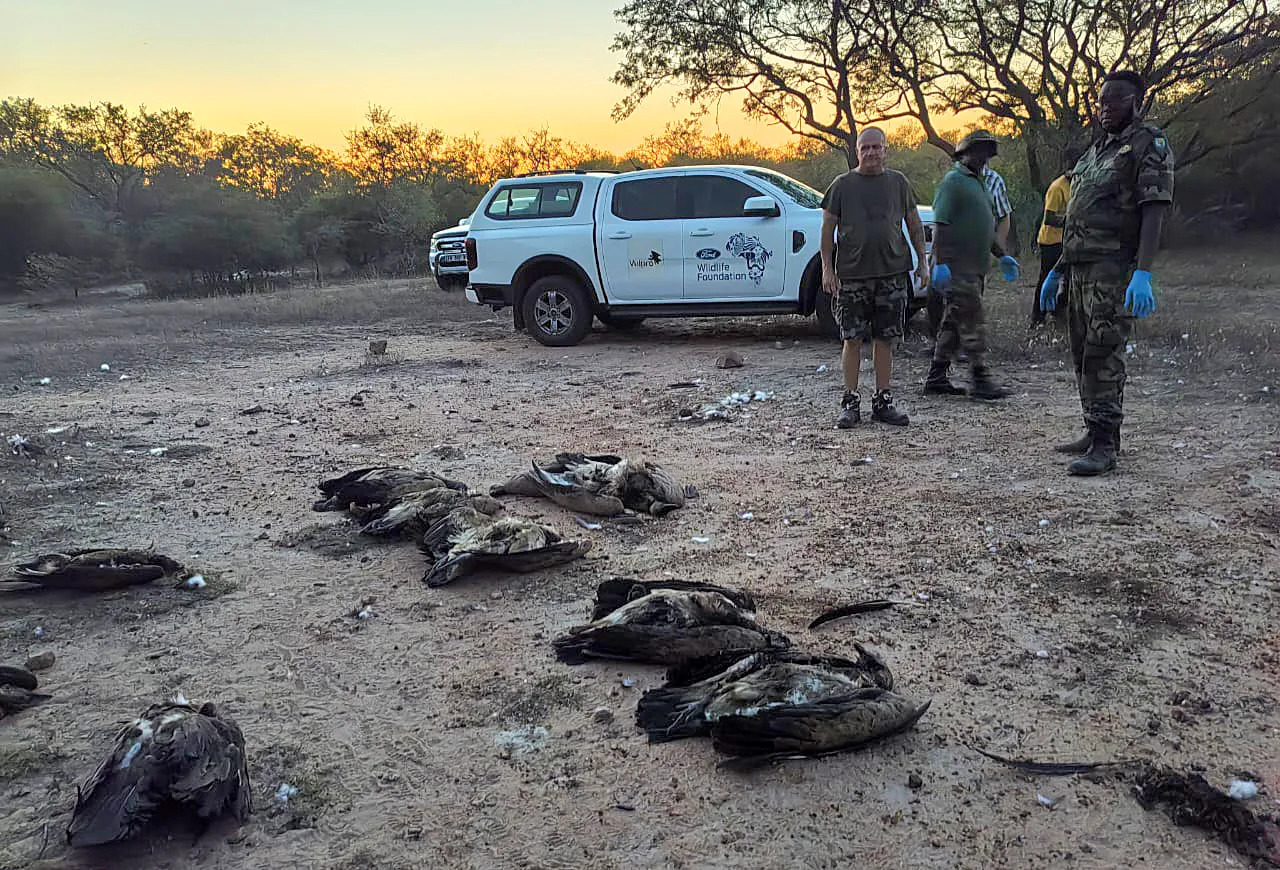
No, we did not add a zero by mistake. Unfortunately, this is the hard reality that hit Africa in the past few weeks. Mass poisoning incidents – small and large – have caused over 600 vultures deaths across the continent.
Recent mass poisonings across Africa

The past few days have been a devastating blow for vulture conservation in Africa. We first reported the two mass poisoning incidents in Zululand that caused 27 vulture deaths, and now, 537 more died in Botswana. In addition to those, more small scale poisonings in Zambia and Kenya killed over 50 vultures from a range of species. These incidents amount to over 600 vulture deaths, in just two weeks! The drivers of these incidents vary between sentinel poisoning in Botswana, belief-use medicines in Zululand, and unintentional poisoning due to human-wildlife conflict in Zambia and Kenya. Incidents of this scale will have adverse effects on vulture populations in Africa, mainly because the breeding season has commenced and many breeding adults were likely killed during these incidents. This furthermore means that if chicks already hatched, they will most likely die without the care of their parents.
537 vulture deaths in Botswana
Conservationists consider this incident as one of the most massive documented killings of threatened species. As in just one poisoning incident, a total of 537 vultures and two tawny eagles met a tragic end. It is believed that three poached elephants were laced with a poisonous chemical that kills vultures and eagles.
Most of the 537 vultures discovered dead at the scene were White-backed Vultures, which are classified as “critically endangered” by the IUCN’s Red List of Threatened Species.

The breakdown of the victims includes:
• 468 critically endangered White-backed Vulture
• 28 critically endangered Hooded Vultures
• 17 critically endangered White-headed Vultures
• 14 endangered Lappet-faced Vultures
• 10 endangered Cape Vultures
Currently, the law enforcement team attending the scene is working around the clock to decontaminate the area and prevent more mortality. If you are in the area, please report any other carcasses as well as any suspicious activities to the police.
The news come after Botswana recently sparked controversy when they lifted a ban on elephant hunting in May, citing growing conflict between humans and the animals. They further supported that the ban would help control a booming elephant population that was damaging farmers’ livelihoods.
We, here at the Vulture Conservation Foundation, are devastated by the news and hope the criminals responsible are brought to justice.
Mass poisonings in Africa are a common problem

Unfortunately, mass poisonings in Africa are successive and frequent, driving several species of African vultures to extinction. This, of course, causes a devastating effect on the population but also the surrounding environment, as vultures are essential for the ecosystem. Just like in this case, poachers that killed the elephants for ivory, laced their carcasses so they wouldn’t be found since vultures circling a carcass can be seen from miles away, and this helps park rangers track illegal poaching. Therefore, killing the birds means that poachers are less likely to be found. So not only are vultures important for the environment, yet they also help track poachers – adding additional usefulness to vultures but also a threat…as if they didn’t have enough on their plate.
State of vultures and conservation actions in Africa

In the past 30 years, some African species have declined by 80%. Seven of Africa’s vulture species are on the edge of extinction, with four species considered Critically Endangered, while three other species are endangered. The Vulture Multi-species Action Plan (Vulture MsAP), co-developed by us here at the Vulture Conservation Foundation, and endorsed by the Convention for Migratory Species (CMS), concludes that poison is the biggest threat to vultures worldwide and a significant part of this global action plan for vultures focuses on the actions needed to fight this threat. Furthermore, the Vulture MsAP is a global strategic blueprint identifying priorities and actions to conserve 15 species of old world vultures, approved in the conference of the parties of the Convention for Migratory Species, which states that poison with poisoned baits (often against predators of livestock) is the main threat to vultures worldwide.
How we tackle vultures’ biggest threat
The VCF is particularly active in fighting this threat and is implementing many projects across Europe and many actions against poisoning. We are also in contact with some African colleagues fighting this threat, but the news coming from that continent are even bleaker than from Europe – seems that the African vulture crisis that led to several African vulture species being considered globally endangered in the last few years is continuing. In Europe we are actively pursuing different lines of work to fight this threat, among which is the Balkan Anti-Poisoning Project, funded by the MAVA Foundation. The project is working and funding local partners in five counties (Croatia, Albania, Bosnia-Herzegovina, North Macedonia and Greece) to try to eradicate this illegal and highly damaging practice.



